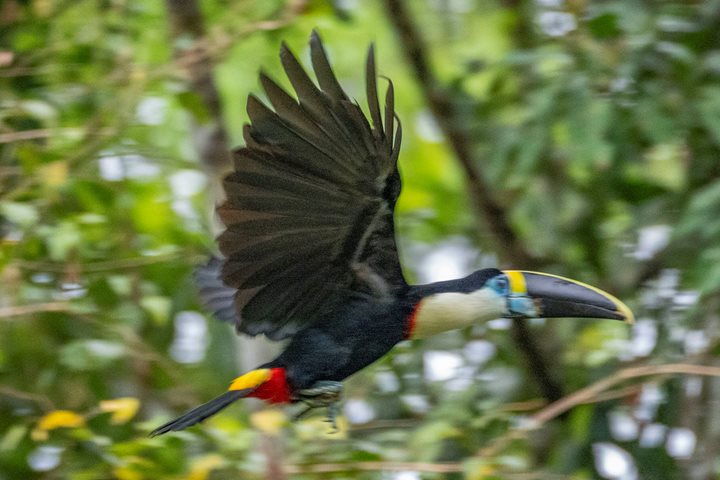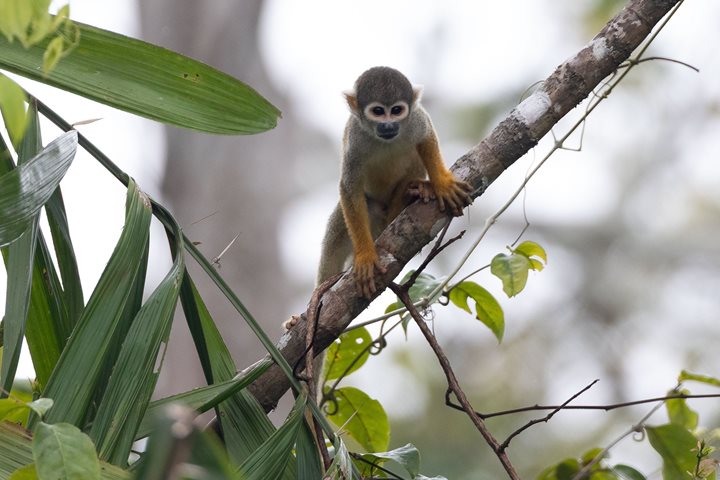Having spent yesterday in the Pacaya River, the beautiful Delfin II sailed downriver in the Ucayali during the night and this morning we woke up near its confluence with the Magdalena River. The Magdalena is a small tributary that flows from the south through the Pacaya-Samiria National Reserve’s buffer zone. Facing the reserve, the buffer zone has more human activity, but it is nonetheless a very beautiful area. This morning we enjoyed watching a great variety of species. Neotropical cormorants were having breakfast, swallowing large fish, mostly carachama, the abundant black armored catfish that everyone loves to eat. Other birds having their early morning meal included great egrets, yellow-headed caracaras, both black and turkey vultures, plus an adult great black hawk feeding on what seemed to be a wattled jacana.
Spending time near a particularly productive tree, we were able to watch and take pictures of masked tityras, a slate-colored hawk, crimson tanagers, and a spot-breasted woodpecker. We also found some saddleback tamarins and a new monkey species for the trip, the beautiful and elusive coppery titi. A small family group regaled us as they traveled through the canopy. What a treat!
As the Delfin II continued sailing upriver, we eventually came to another tributary, the Supay River. A refreshing rain after lunch cooled the air and by the time we boarded our skiff again it had stopped, leaving a very pleasant temperature. The Supay meanders through a big area, creating several small lagoons, islands and oxbow lakes where we encountered many creatures. There is always a lot of bird activity after an evening rain and today we saw numerous very attractive and uncommon species, like the long-billed woodcreeper and the crimson-crested woodpecker or the blue-gray tanager. But it was the male plum-throated cotinga, with his electric blue plumage, that won the biggest number of “ooohs” and “aaahs.” A truly magnificent bird! But the evening had a big surprise for us (well, big as a natural wonder but tiny in size). An impossibly small pygmy marmoset posed for us for a long time as it basked in the sun! The smallest monkey on earth and smaller than your average city park squirrel, the pygmy marmoset is oftentimes difficult to find due to its diminutive size and preference for hiding deep among the foliage. What a gift that Amazonia gave us!
IMAGE: The world’s smallest monkey, the pygmy marmoset. (Photo by Carlos Navarro)







